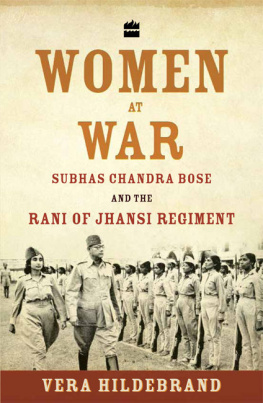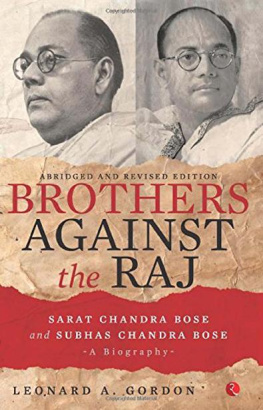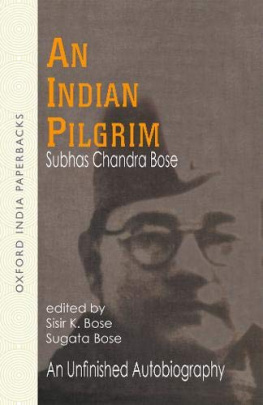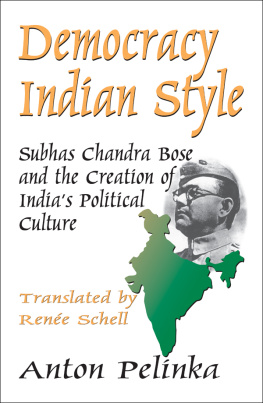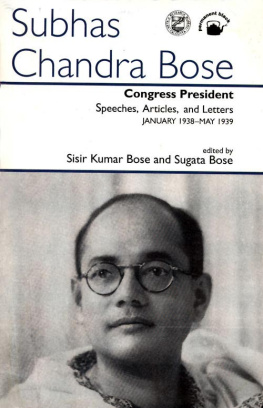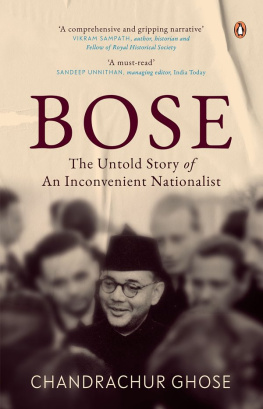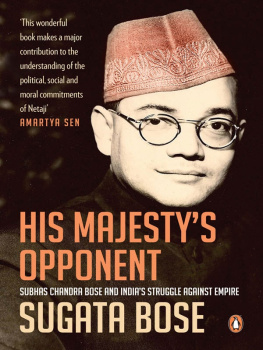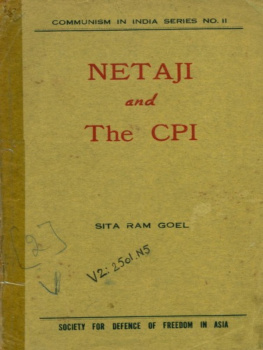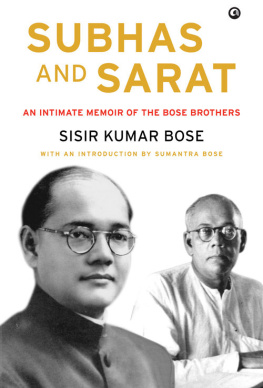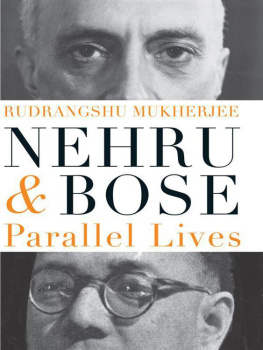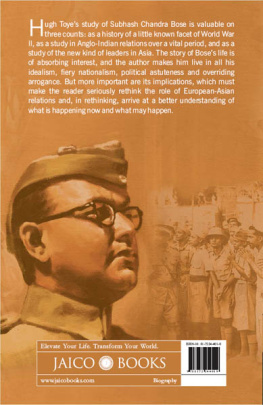Vera Hildebrand - Women at War: Subhas Chandra Bose and the Rani of Jhansi Regiment
Here you can read online Vera Hildebrand - Women at War: Subhas Chandra Bose and the Rani of Jhansi Regiment full text of the book (entire story) in english for free. Download pdf and epub, get meaning, cover and reviews about this ebook. year: 2016, publisher: HarperCollins Publishers India, genre: Politics. Description of the work, (preface) as well as reviews are available. Best literature library LitArk.com created for fans of good reading and offers a wide selection of genres:
Romance novel
Science fiction
Adventure
Detective
Science
History
Home and family
Prose
Art
Politics
Computer
Non-fiction
Religion
Business
Children
Humor
Choose a favorite category and find really read worthwhile books. Enjoy immersion in the world of imagination, feel the emotions of the characters or learn something new for yourself, make an fascinating discovery.
- Book:Women at War: Subhas Chandra Bose and the Rani of Jhansi Regiment
- Author:
- Publisher:HarperCollins Publishers India
- Genre:
- Year:2016
- Rating:3 / 5
- Favourites:Add to favourites
- Your mark:
- 60
- 1
- 2
- 3
- 4
- 5
Women at War: Subhas Chandra Bose and the Rani of Jhansi Regiment: summary, description and annotation
We offer to read an annotation, description, summary or preface (depends on what the author of the book "Women at War: Subhas Chandra Bose and the Rani of Jhansi Regiment" wrote himself). If you haven't found the necessary information about the book — write in the comments, we will try to find it.
Vera Hildebrand: author's other books
Who wrote Women at War: Subhas Chandra Bose and the Rani of Jhansi Regiment? Find out the surname, the name of the author of the book and a list of all author's works by series.
Women at War: Subhas Chandra Bose and the Rani of Jhansi Regiment — read online for free the complete book (whole text) full work
Below is the text of the book, divided by pages. System saving the place of the last page read, allows you to conveniently read the book "Women at War: Subhas Chandra Bose and the Rani of Jhansi Regiment" online for free, without having to search again every time where you left off. Put a bookmark, and you can go to the page where you finished reading at any time.
Font size:
Interval:
Bookmark:
WOMEN
AT
WAR
SUBHAS CHANDRA BHOSE
AND THE
RANI OF JHANSI REGIMENT

VERA HILDEBRAND

HarperCollins Publishers India
Dedicated to
my husband Robert Blackwill
and
the courageous members of the Rani of Jhansi Regiment
CONTENTS


THE RANI OF JHANSI REGIMENT
AMONG THE MORE IMPROBABLE events of the Asia-Pacific theatre in World War II was the creation in Singapore in 1943 of a corps of female Indian combat soldiers, the . Because the creation of an Indian all-female regiment of combat soldiers was a radical military innovation in 1943, and because the role of women in todays broader context of Indian culture has become a prevalent and pressing issue, the extensive testimony of the surviving veterans of this unit is timely and urgent. More than seven decades later, the history of these brave women soldiers is little known, their extraordinary service and the role played by Subhas Chandra Bose having remained largely unexplored.
Five broad developments converged in the summer of 1943 to facilitate the creation of the in the South-East Asian diaspora, away from daily oppressive colonial realities in India. And fifth, tens of thousands of Indian prisoners of war held by the Japanese army in Malaya combined with this intensified Indian nationalism, led Bose to conclude that the best chance for the military liberation of India was an invasion across the Indo-Burma border.
The confluence of these disparate factors inspired Bose to recruit women from the Indian diaspora. And the women dared to exploit the opportunity to enlist in the Rani of Jhansi Regiment. The central themes of this book comprise the details of this alignment of social and political forces and their materialization in the establishment, recruitment, training and deployment to Burma of these fighting women.
Bose named the Rani of Jhansi Regiment after
In the years since the The facts are nearly as impressive as the myth.
The at the city of Imphal.
Combat infantry denotes soldiers in uniform serving in an organized fighting force trained to engage in ground attack. The RJR may be the first all-female infantry combat unit within an established army. Being the first women to sign up for infantry combat duty was a matter of pride for the Ranis, and for Bose it was important that these path-breaking female soldiers were Indian. Although fable and history are replete with stories of female warriors from , most of these ancient and legendary female warriors fought alone or with bands of soldiers to protect their homes. The historical Rani of Jhansi was a widow who belonged to the last category.
This strict definition of
A principal reason for the traditional exclusion of women from ground combat has been to prevent them from becoming and suffering rape. The Rani of Jhansi soldiers, fully expecting to engage in ground warfare, accepted the danger of being taken prisoners, but they made it clear to me that they had not considered the danger of rape. Innocent in this regard, they deployed to the steamy jungles of Burma determined to follow their hero to victory and to the liberation of India. This is their story.
SEARCHING FOR THE RANI OF
JHANSI REGIMENT
THE ALL-FEMALE RANI OF Jhansi Regiment was created as part of the . In the many tomes written on the South-East Asian theatre of war by mainstream scholars of India and the British Raj, the history of the RJR has remained largely unexplored. These serious historians, Indian and Western, all male, judged the addition of women into a standing army worth only a couple of lines, if that.
During their service, the women of the Regiment were known as . After visits and interviews with the first few Ranis, the process of locating other veterans became simpler as each Rani identified any others with whom she had kept in touch. A Christmas card from 1959, an invitation to a daughters wedding or a photograph of a Rani with her small children all treasures the recipients had kept safeguarded for decades served as clues that prodded memories and enabled me to pick up the trail of other RJR veterans. I believe that in the period 200811, I tracked down all surviving Ranis, with the remotely possible exception of any who may have remained in Burma, now Myanmar.
My telephone call or visit to the home of a Rani to ask for an appointment for an interview was almost always answered with happy excitement. Usually I was welcomed into their homes and was offered both drink and food, sometimes staying overnight with the Rani and her family. Several Ranis now live with children and grandchildren. Just one . I did, however, in all three cases, speak to their sisters who had also served as Ranis. Generally, when no one answered the telephone at what I thought was the likely home of a Rani, I went to the location and enquired with the neighbours. In most instances, with the generous help of neighbours, shopkeepers and tradesmen, I found the Rani, but at other times I learned from relatives, friends or neighbours that she had died.
All but four of the Rani interviews were conducted in English. Other than these four exceptions, the Ranis spoke fluent English either as their first or as their second language. For two interviews that were not conducted in English, a professional Tamil interpreter translated consecutively questions and answers. In the case of a third informant who spoke only Tamil, the Ranis lively nineteen-year-old granddaughter acted as translator. In the fourth case, because the Rani was shy about speaking English, her younger sister, who was an English teacher, translated from Bengali. As the interview progressed, however, the Rani constantly improved upon the precision of her sisters translation.
Except for those sessions requiring translators, the Rani and I would sit apart from other people during the interview. Many of the Ranis lived in small quarters, and family members and servants could listen in; sometimes a daughter or a granddaughter commented or asked questions from other rooms. Several Ranis were interviewed more than once; I spoke with some over several days. I took photographs of each Rani who agreed to my doing so, and I received permission to publish the photographs as well as their testimony and life stories.
In this book, a Rani is initially referred to by her first name, her maiden name, and if she used the name of her husband then also her married name. Subsequently, the Ranis are identified by their first names because in the interviews that is how they referred to each other. The commander of the unit, Lakshmi Swaminathan Sahgal, MD, is generally referred to as Captain Lakshmi, which is what she was called during her service in the Regiment and as a prominent public figure in India after the War.
Stressing that participation was completely voluntary, I explained that I wanted to interview every surviving Rani about her experiences while serving as a soldier in the Rani of Jhansi Regiment in the . Before proceeding, each Rani gave her recorded permission for me to publish her responses. I recorded all interviews using a digital recorder placed in full view of the Rani.
Both before the interview and after, the Rani was invited to ask whatever questions she or her family might have. Each Rani received my full contact information, home address, email address and telephone numbers in case she wanted to add or change any of the information given. One daughter, , has subsequently written to enquire when the book will be published.
Next pageFont size:
Interval:
Bookmark:
Similar books «Women at War: Subhas Chandra Bose and the Rani of Jhansi Regiment»
Look at similar books to Women at War: Subhas Chandra Bose and the Rani of Jhansi Regiment. We have selected literature similar in name and meaning in the hope of providing readers with more options to find new, interesting, not yet read works.
Discussion, reviews of the book Women at War: Subhas Chandra Bose and the Rani of Jhansi Regiment and just readers' own opinions. Leave your comments, write what you think about the work, its meaning or the main characters. Specify what exactly you liked and what you didn't like, and why you think so.

